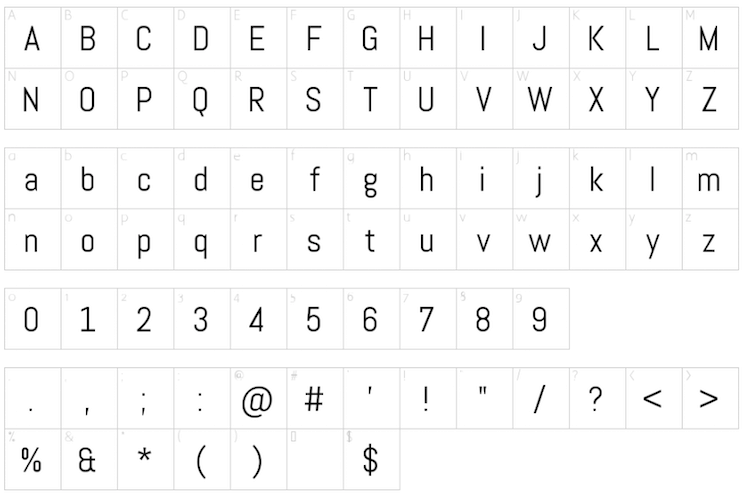Have you ever visited a website, whether it be an online store or a simple blog, and just felt your eyes get all big due to its aesthetically-pleasing design and user experience?
Perhaps, it’s the neat uncluttered layout, subtle parallax effect lined up with popping graphics, or even the eye-catching fonts in use. Speaking of the last part, the truth is that your chosen font plays a vital role in defining your brand image.
It can affect the reader’s experience on your website and how likely they are to convert, so you want to get it right.
Visit some notable websites in various industries, you’ll notice that they have very distinct typography and font pairings. This review, for instance, displays a sleek, contemporary user interface by combining Poppins and Open Sans.
On the other hand, fonts used by websites by eBay, Uber, Microsoft, and Uber are more conventional. This is because their target audience is more of the average web consumer and not professionals with sophisticated needs.
The point is that the right can be a major player in your marketing or sales strategy, so you should always consider using a great font for your site. However, how can you make this happen? Let’s find out below.
Introduction to Fonts
Simply put, fonts are the graphic characters that are used to make up the words that you read or write on a website. Generally, they are the base font plus bold, italic, extra-bold font styles, and more to complete a typeface.
Fonts are a crucial part of effective typography. Every font is unique in its own set of unique characteristics, such as weight (light, medium, and bold), size, slant, and so on. All these elements combine to form a typeface. Some common fonts available, which you may have used at some point are:
- Times New Roman
- Arial
- Calibri
- Cambria
- Calluna
- Georgia
- Adobe Caslon Pro
- Roboto
- Verlag Black
- Playfair Display
I for instance, am an avid supporter and user of simple but excellent fonts, most especially those belonging to the sans-serif typeface. Open Sans, for example, allows me to go bold without creating an overwhelming reading experience. It also has excellent readability.

Guidelines for Selecting the Ideal Font
Understand that fonts aren’t just mere letters. They have a subtle effect on readers even when not conscious of them.
Here’s what I mean. When I write horror-based novels, I opt for Blood Thirst by Font Monger for the chapter titles to give my plots a more sinister tone. In contrast, when designing a site for a local pizza delivery service, I would use Nicky Laatz-inspired The Simply Sweet Font Duo to make the overall theme brighter and cheerier.
What’s more, such font fits the content and set the audience in the right mood. So, how can you choose the perfect typeface for your website?
Select Fonts that Represent Your Brand and Message
In a way, the font you pick for your site becomes the official representation of your business. You can create a catchy tagline or slogan, use a logo, and employ other strategies to express your brand’s personality.
Font choices can also do the same job of expressing the brand’s overall tone and style. A good example is Facebook, which uses modified Klavika. The simple font perfectly reflects the company’s image.
If you are building a tech website, your font should be as futuristic as possible, such as Terrabyte, Blackpast, or Vortex.
On the other hand, a business selling kitchen utensils would want to use a font that projects a sense of ease and comfort. Fonts like Helvetica Neue works perfectly.
Determine Your Audience
Once you understand your target audience, it’s much easier to find the perfect font. For instance, if you are targeting young, trendy people, using a font like Densia Sans or Quiroga Serif would be an excellent option.
If you are targeting the elderly, opt for Helvetica or Arial to give a better reading experience. Senior citizens, especially those with vision problems, will find them entertaining.
Comic Sans has unmodulated strokes like Helvetica, but I wouldn’t pick it. Unlike the latter, the former’s weight isn’t evenly distributed, which makes it annoying to read.
Consider the Number of Texts to Typeset
Another important factor in font selection is the number of text pieces on your site. Some fonts are better when used on one or two headings on the home page while others work better for smaller blocks of texts. So, always keep that in mind.
For headings and sub-headings, you can opt for more decorative fonts with a quirky, yet classy appearance. These fonts are often ideal for blogs. Several fantastic options are available to experiment with, from Poppins to Audrey.
Prioritize Your Fonts Based on Their Significance
The last thing you want is to overwhelm your online visitors with an extensive collection of different font styles.
Instead of making the font selection process even more difficult for yourself, you can group your fonts according to their importance. You can set up categories, such as body text, sub-headings, buttons, and titles, to name a few.
Next, you can group similar fonts in each category. If you have a business website, the fonts you use for the headings and sub-headings can be the same.
Your website should have primary and secondary fonts. The former works for headlines and sub-headlines (H2 – H4, or beyond), while the latter works for the body text.
Focusing on body text, ensure that you choose a font that is easy to read and pleasing to the eye. As a reminder, inspect the paragraph alignment and text spacing to ensure proper organization.
Adapt Selected Texts to Acceptable Sizes
Among the keys to developing a visually-appealing site is making your text readable. Hence, font sizing is paramount. Even though the internet is dominated by small and large fonts, not all visitors will be comfortable reading text that is much larger or smaller than usual.
Some of them have poor vision, which implies the need to strike the right balance. Here are the most commonly-used font sizes:
- H1: 30 to 70 px
- H2 – H5: 23 to 30 px
- Body text: 16 px
Remember that you can modify the font size to change the overall experience of your website or blog. For instance, smaller fonts can make the content appear more serious and professional. Alternatively, the larger ones can give your online content a friendlier and more enjoyable vibe.
Weigh the Font’s Functionality Against Its Design
After determining the type of font you want to use, it’s time to consider its functional aspect. Design isn’t enough to make a decision. To determine its function, you’d have to ask these questions:
- Is the font easy to read?
- Can you use it to express the message of your site?
- Can it be easily modified to meet the needs of the website’s design?
If you can answer all these questions in the affirmative, then you’ve probably found the right font for your website. If not, don’t give up.
Instead, begin exploring available options until you find one that fulfils your needs and targets your audience. A simple Google search or GlobeNewswire reviews will assist you on how to find the best option for you.
Conclusion
Choosing the right font for your website is a crucial decision that shouldn’t be taken lightly. It plays a role in determining how your brand is perceived in the market and whether or not you will be able to reach out to your target audience effectively.
With the number of options available, narrowing down the search can be quite overwhelming. However, if you consider the factors outlined in this guide, the process will be much easier. Plus, your website will look stunning.




